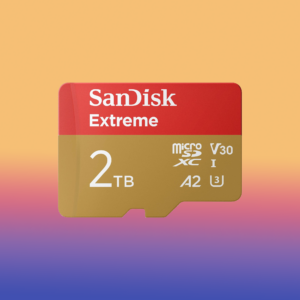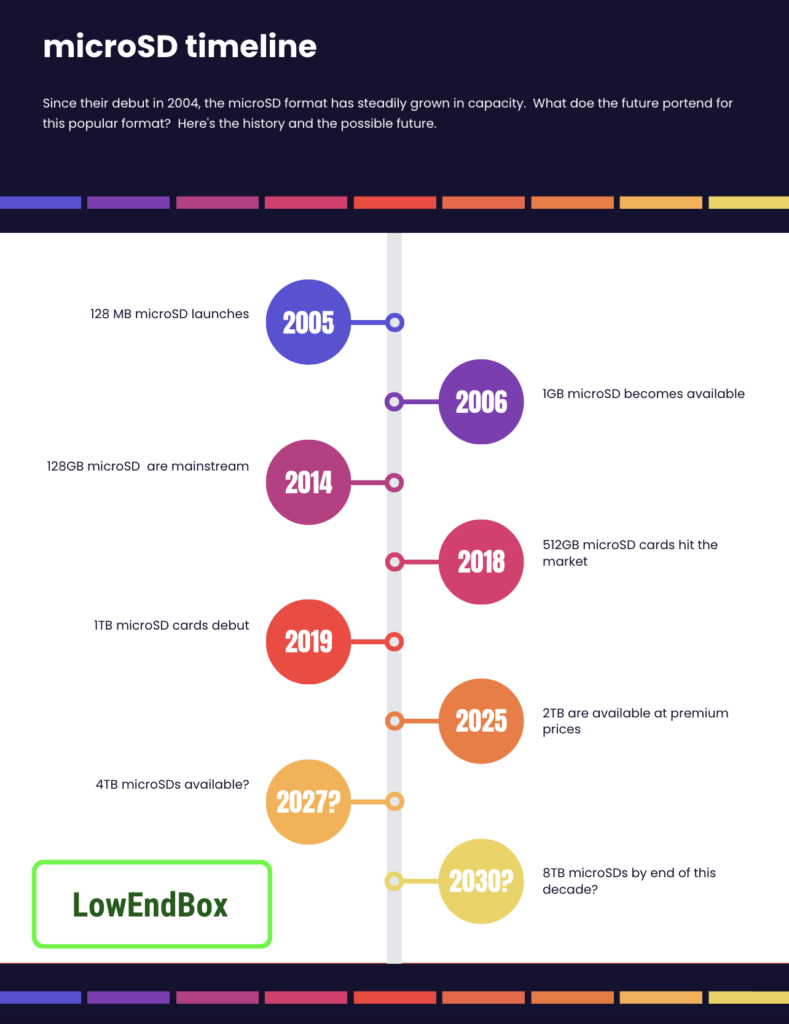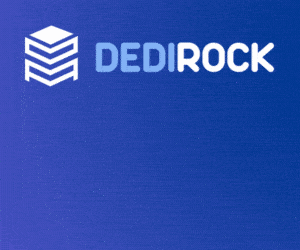 Last week I was preparing for a long plane ride. I grabbed my preferred travel video player – an Amazon Kindle Fire, which has a handy microSD port – and dug out a fingernail-sized piece of storage media to insert. It occurred to me that this tiny centimeter-sized slab of plastic and silicon holds more data (1TB) than the entirety of the first datacenter I worked in back in the early 90s.
Last week I was preparing for a long plane ride. I grabbed my preferred travel video player – an Amazon Kindle Fire, which has a handy microSD port – and dug out a fingernail-sized piece of storage media to insert. It occurred to me that this tiny centimeter-sized slab of plastic and silicon holds more data (1TB) than the entirety of the first datacenter I worked in back in the early 90s.
If I had 1″ cube, I could fit about 625 micro-SD cards in it. The current biggest microSD card is 2TB, so that’s nearly 1 petabyte in cube I could fit in my pocket.
Talk about a time to be alive.
It made me wonder how far this can go. Will we one day have 4TB microSDs? 8TB? Perhaps 128TB?
The answer is: yes — with some qualifications. Let’s unpack.
What’s the Theoretical Limit?
The microSD card format is governed by the SD Association, which defines four classes:
- SD: Up to 2 GB
- SDHC: Up to 32 GB
- SDXC: Up to 2 TB
- SDUC: Up to 128 TB
n paper, the official standard tops out at 128 TB for microSD. BTW, the filesystem isn’t the probem: exFAT can handle sizes well into the petabyte range (128PB, to be specific).
The Hard Limits Are Physical
The absolute constraints come from:
- NAND flash density — how many bits we can store per cell, reliably.
- Error correction overhead — as density increases, so does the risk of data errors.
- Heat and power — jamming trillions of cells into a tiny plastic card creates serious thermal management problems.
- Manufacturing costs — at ultra-high densities, yields drop, and prices rise, perhaps beyond feasibility.
Right now, we’re pushing QLC (Quad-Level Cell) flash, and companies are working on PLC (Penta-Level Cell), which would store 5 bits per cell. But each step adds complexity and reliability risks.
Economics Are the Killer Constraint
There’s also a simple market reality: beyond a certain point, it becomes cheaper and more reliable to buy a small external SSD instead of pushing microSD to extremes. You could make a 128 TB microSD card — in theory — but the cost would make your eyes water.
There’s also, at present, a limit to how much someone would want to put on a microSD. Having a 1PB microSD would be cool, but I wouldn’t pay a lot more for it than I would pay for, say, an 8TB because I don’t have 1PB of data I want to put on one.
Roadmap: When Will Bigger microSD Cards Arrive?
Capacity | Status | Forecast |
|---|---|---|
1 TB | Available since ~2019 | Mainstream now |
2 TB | Available since 2024/2025 | Cutting-edge, premium |
4 TB | R&D stage | Possible ~2027–2028 |
8 TB | Experimental labs only | Maybe 2029–2030 |
128 TB | Theoretical standard limit | Maybe never — or far future |
Expect to see 2 TB and 4 TB microSD cards this decade — maybe even 8 TB by 2030.
Beyond that, the future is unclear. The USB thumb drive, for example, topped out at 2TB – not because there is a hard physics reason, but because of market forces and the changing technology landscape. Most people simply don’t have enough data to store on external media, and if they do, they’re willing to make the leap to a different format (such as the 4TB external SSD I use to backup my laptop).
























A very interesting article. I still use 16, 32 and 64Gb. Nothing bigger as I have no need. At the current price, a 1Tb card is a lot of money to lose if it stops working. And in my experience they sometimes do break without warning and never work again. Also it’s easy to mislay and lose something that size. Unlike a drive. So probably better to have several smaller cards than one big one?
My folder of scans of 40 years of personal and business paperwork is just 43Gb.
A 1TB is ~$70. So yeah, it’s a bit of a commitment. You only really need that kind of space if you’re dealing with media files.